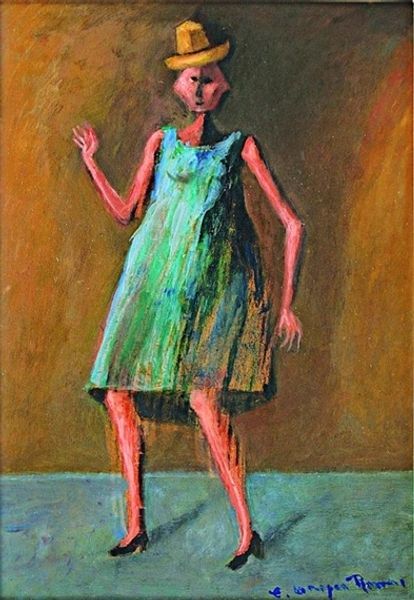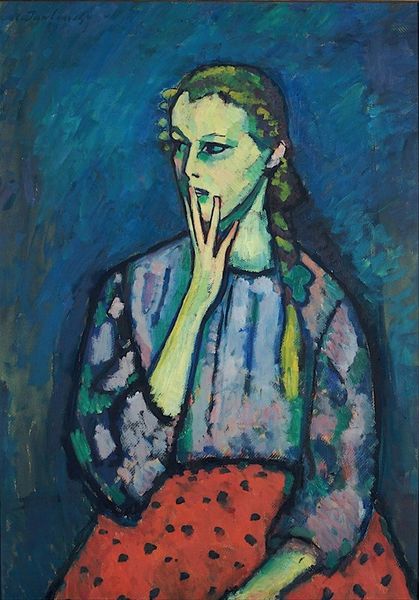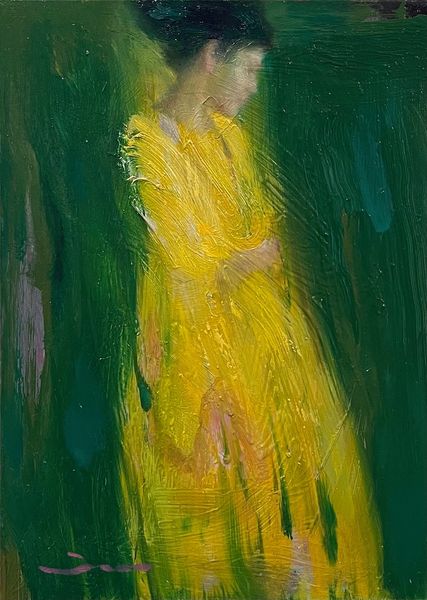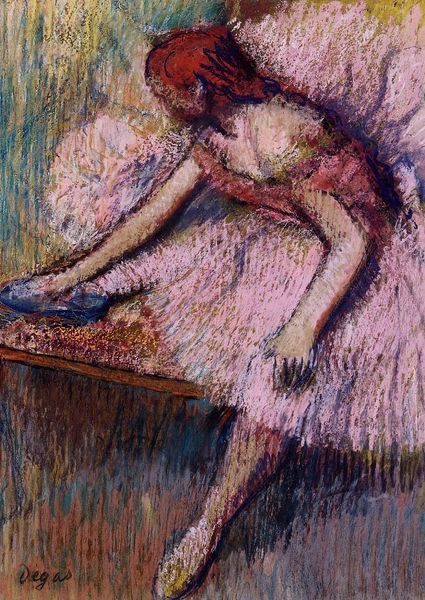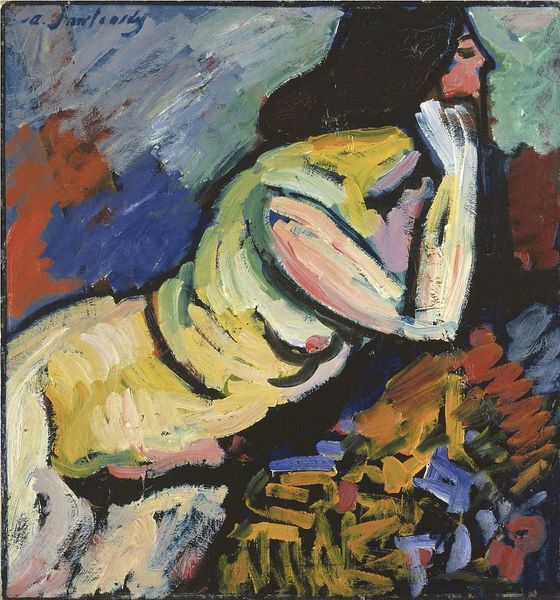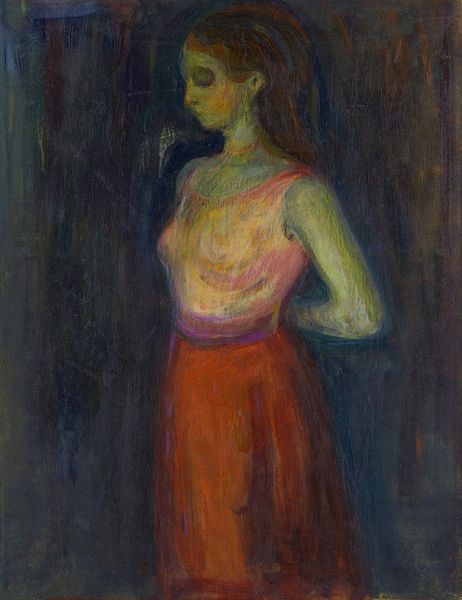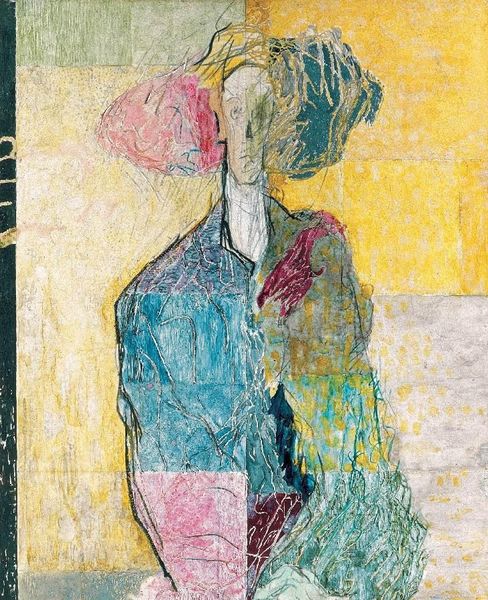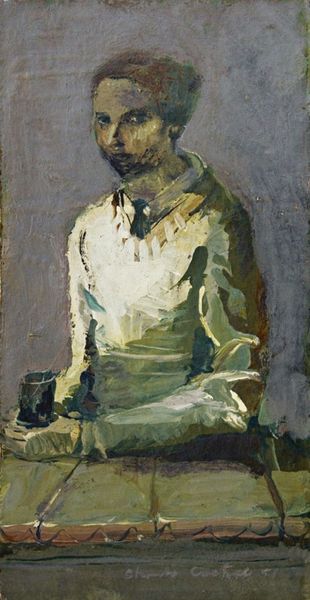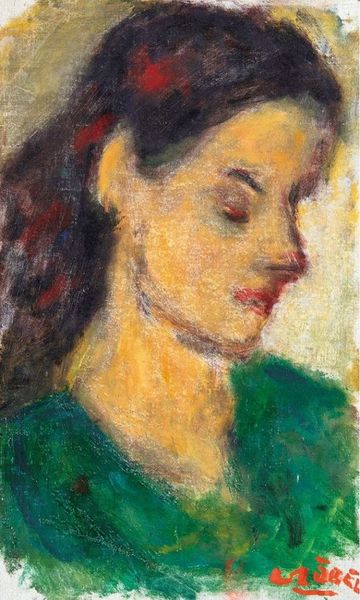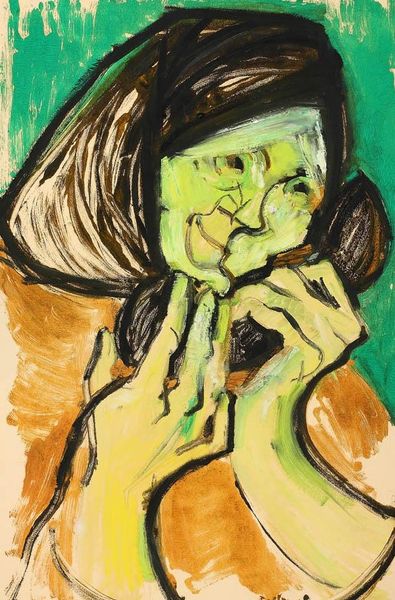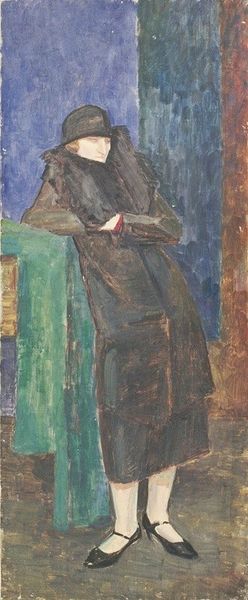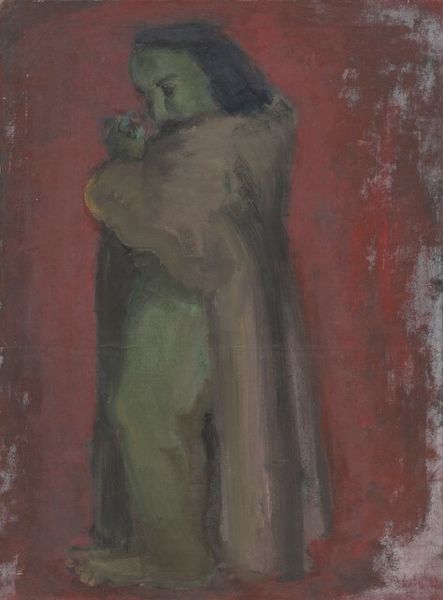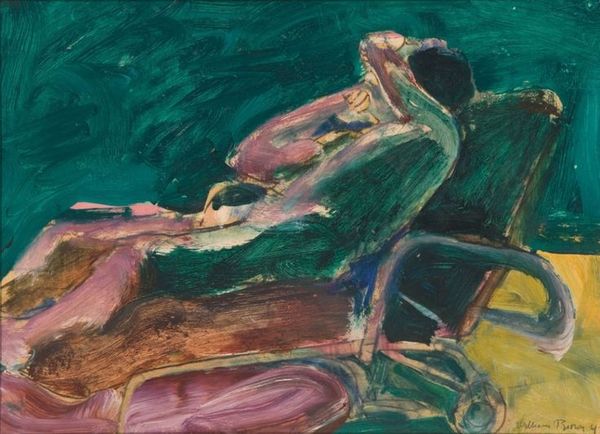
painting, oil-paint
#
portrait
#
self-portrait
#
narrative-art
#
painting
#
painting
#
oil-paint
#
figuration
#
oil painting
#
vanitas
#
neo expressionist
#
neo-expressionism
#
modernism
Copyright: Alexander Roitburd,Fair Use
Curator: Here we have Alexander Roitburd’s "Self Portrait" from 2007, rendered in oil on canvas. My immediate reaction is one of… unsettling tranquility? The vibrant greens are almost at odds with the subject matter. Editor: Tranquility is an interesting take. For me, it's the raw physicality that hits first. The thick impasto application of the oil paint makes the figure seem almost sculpted, like a monument built from viscous material. What statements are being made about the materiality and substance of the art process itself? Curator: Well, consider the sociopolitical landscape in Ukraine during that period. The orange and green could refer to political factions at the time, while the art market was flourishing amidst ongoing turbulence. Was Roitburd using the neo-expressionist style as a reflection of a society’s angst about value and consumption? Editor: Interesting that you bring that up; it really speaks to your interest in the historical forces present. Looking at the ropes binding the figure's wrists, it emphasizes the power dynamics inherent in production. Are we considering, perhaps, the restraints put on artistic labor during that time? Curator: Absolutely! The museum becomes a battleground for narratives and it certainly challenges how these artworks achieve cultural prominence or relevance and, also how society shapes our interpretation. I can only guess the power structures involved in Ukraine at the time, specifically influencing this visual piece. Editor: And think of how art history, art institutions and markets can turn raw materials and processes into symbols of prestige. Roitburd's "Self Portrait" could also highlight a kind of cultural and self-commodification, using one's image and emotions as a form of marketable identity within contemporary art. Curator: It's powerful how the artwork prompts us to ask a question regarding whose stories the institutional narrative has highlighted in history. It invites us to re-evaluate historical interpretations and museum practices, thus highlighting critical societal issues. Editor: Definitely food for thought on the artist's part. I think, to wrap it up, we can confidently consider what tangible elements in this artwork and the environment that produced it teach us about Roitburd's art and identity, don't you think? Curator: Certainly, this allows us to move towards a larger understanding regarding art's engagement with wider political, historical and social conversations and meanings.
Comments
No comments
Be the first to comment and join the conversation on the ultimate creative platform.
